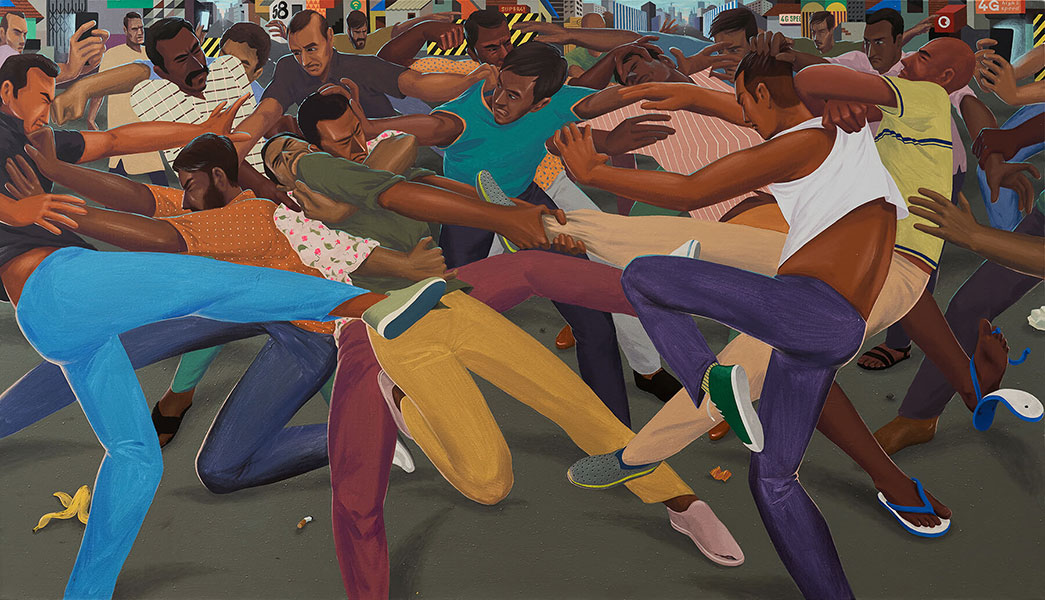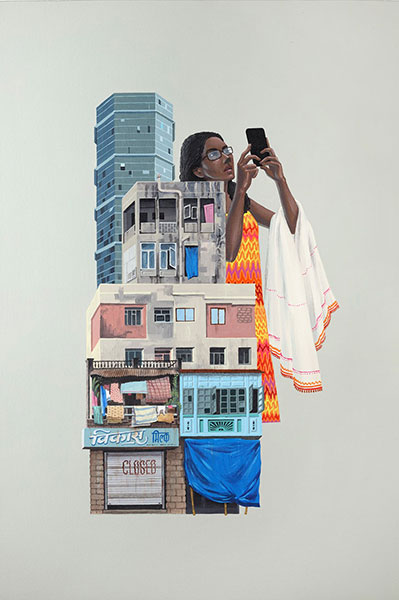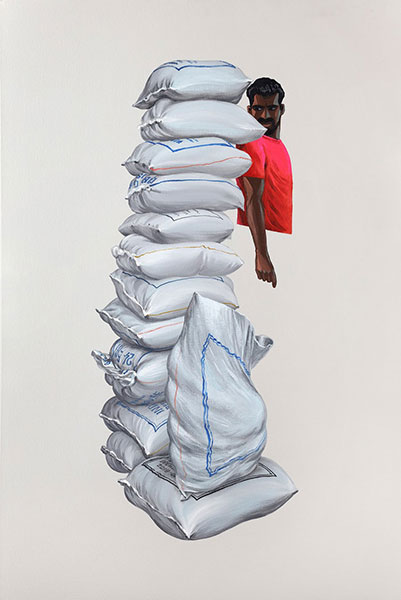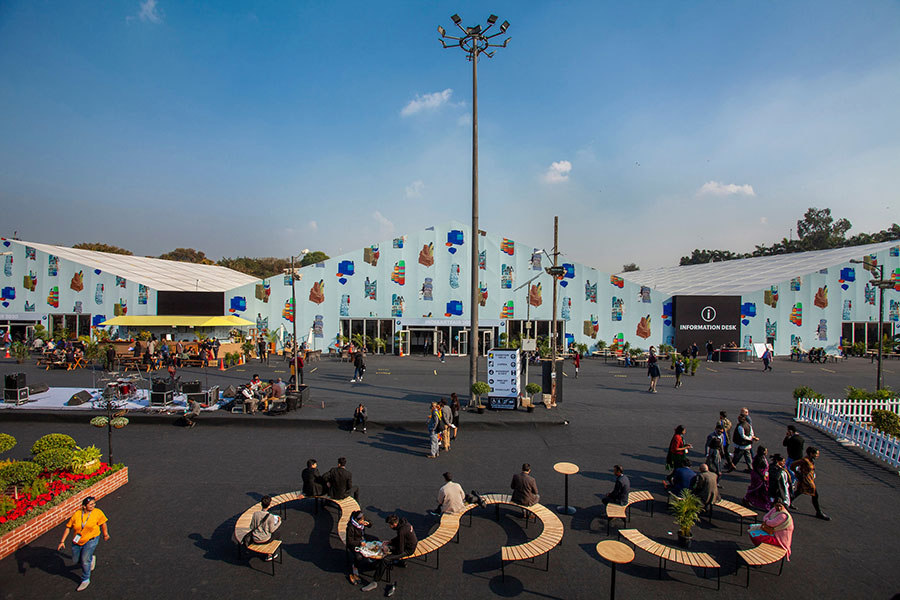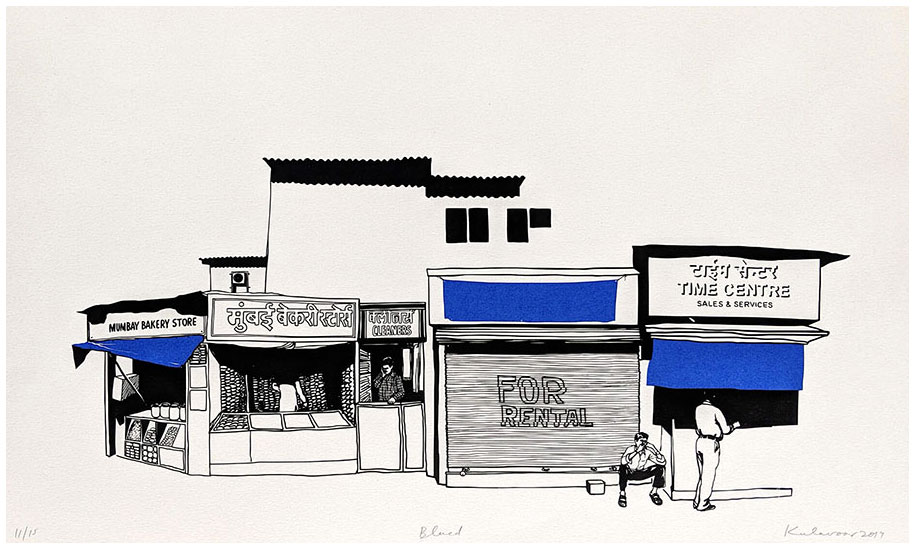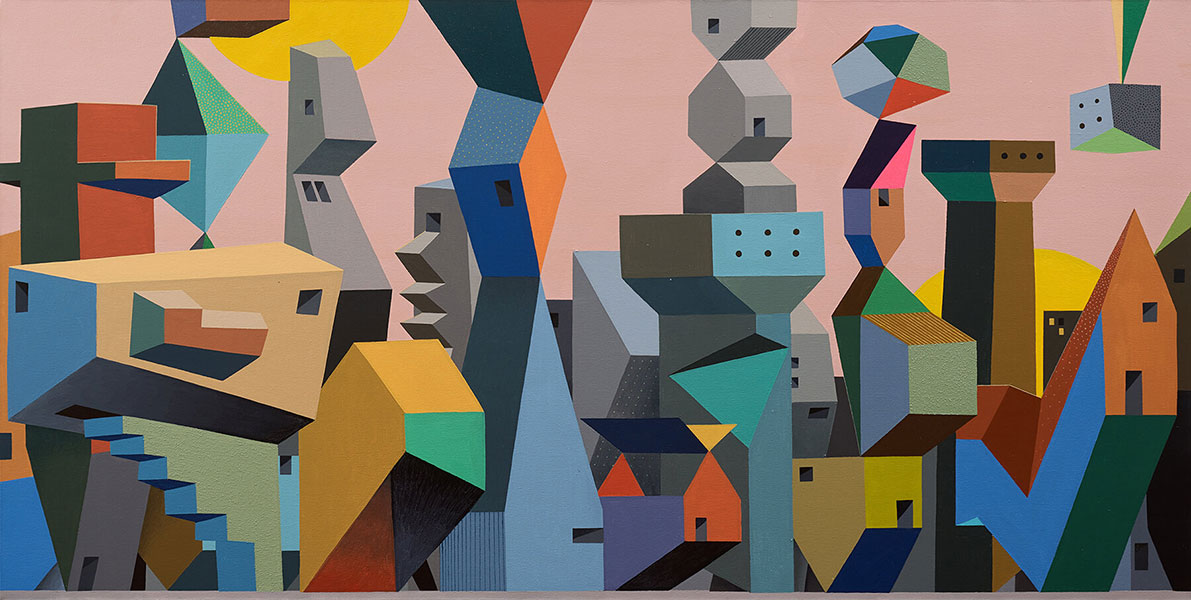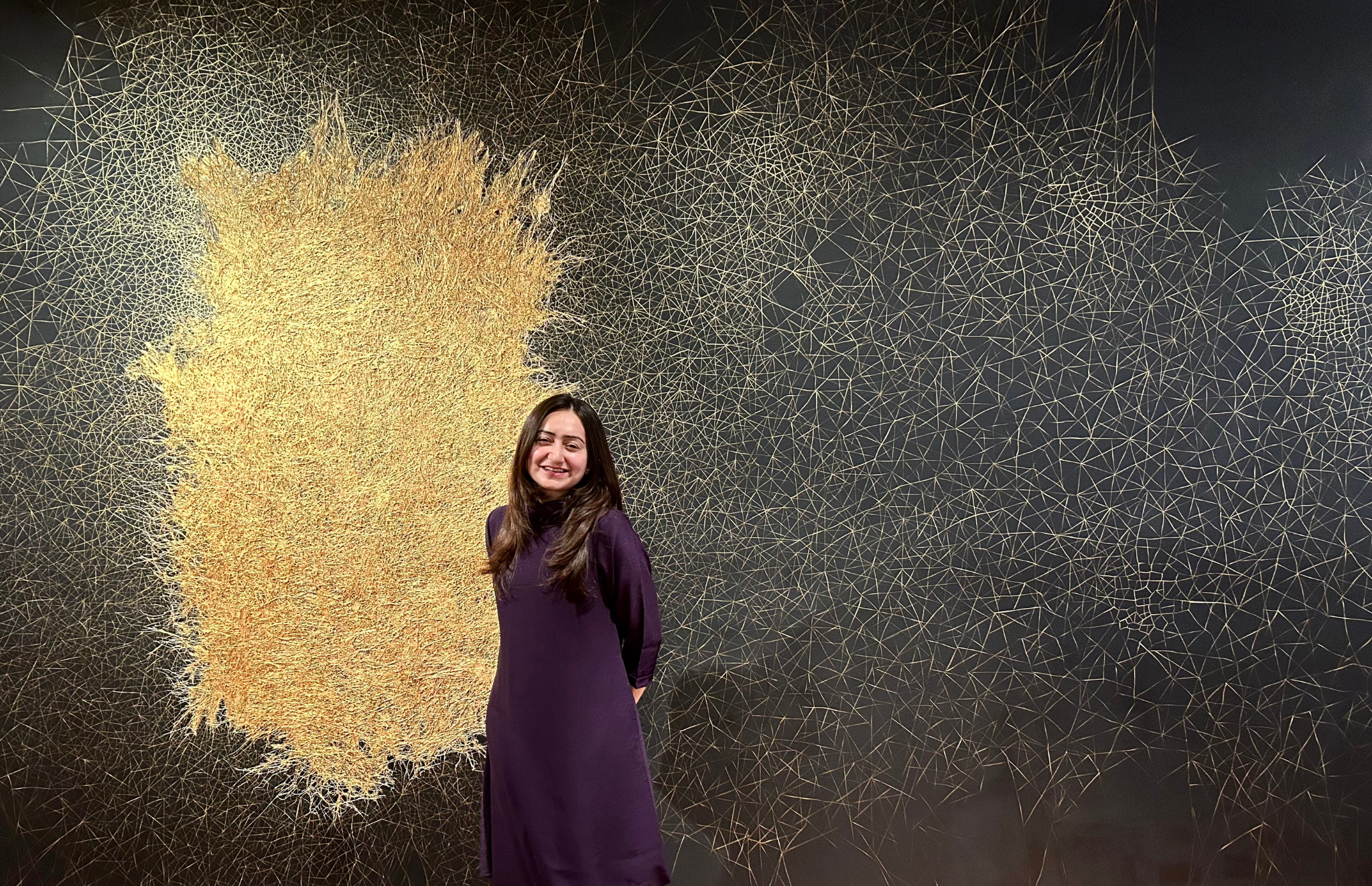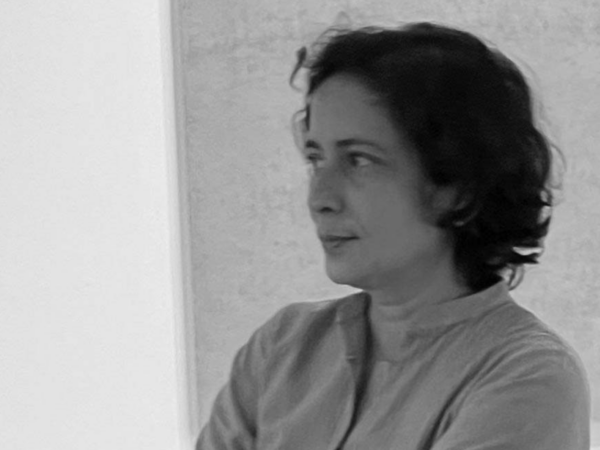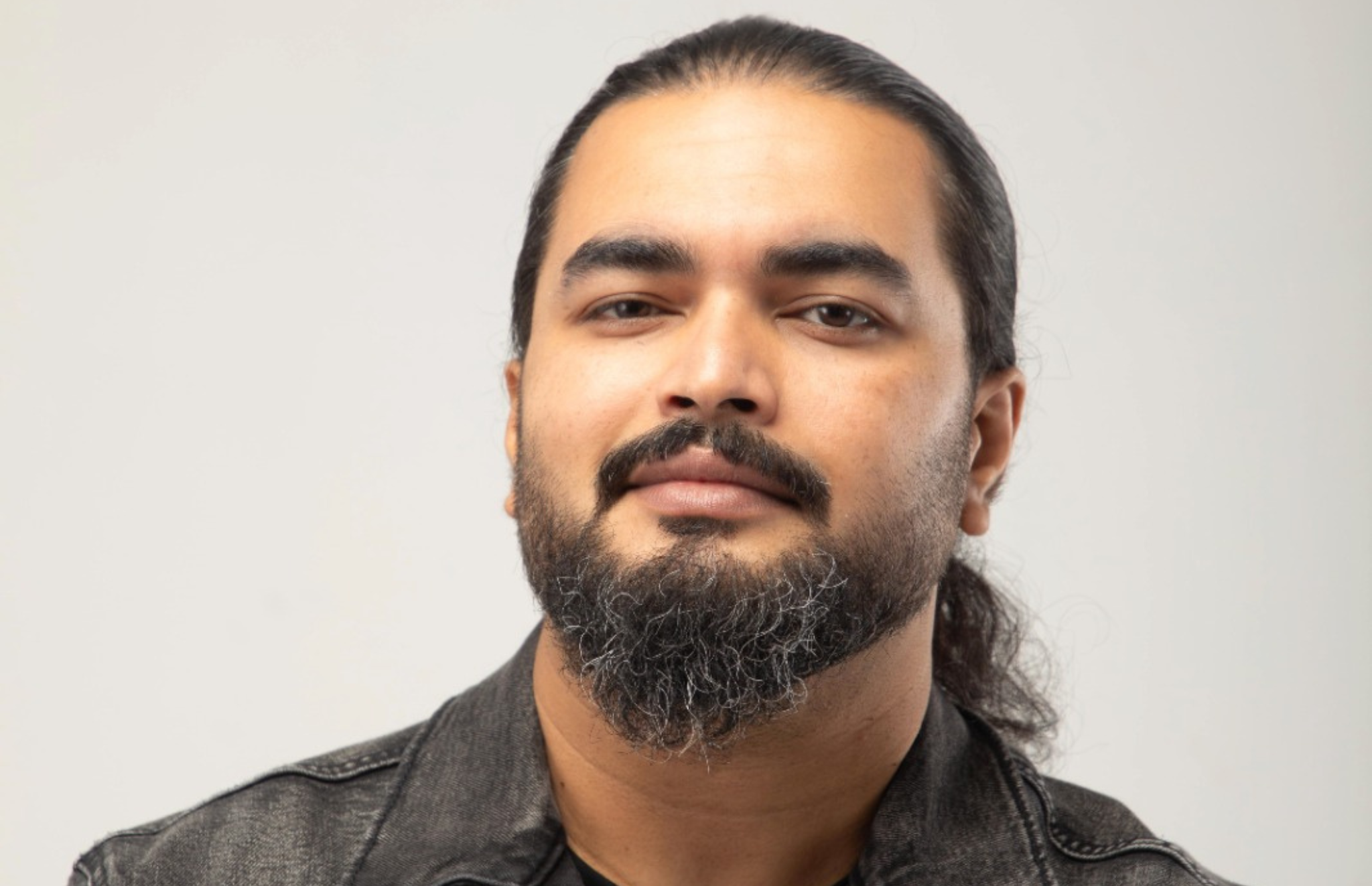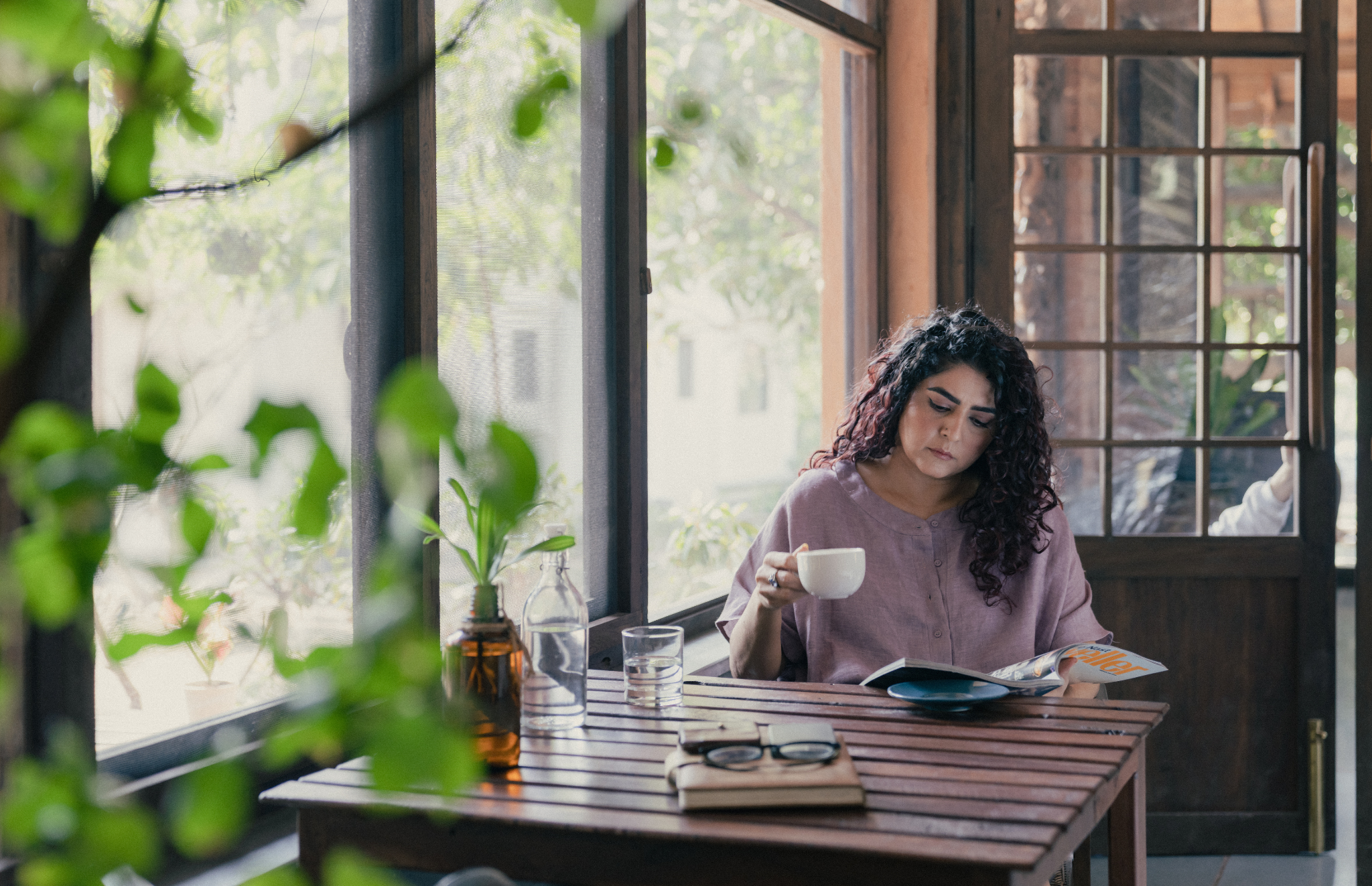Sameer Kulavoor graduated in 2005 from Sir J. J. Institute of Applied Art in Mumbai, after which he began working as an independent designer and illustrator. In the first few years of his career, he worked with various clients on design, illustration and motion graphics projects. In 2009-10 he began self-publishing when Bombay Duck Designs was founded.
“ In the last 5-7 years I have devoted all my energy into my own art practice. The transition from design to my current practice took about 6-7 years and it has given me a new lease of life and a lot of freedom. Painting and drawing are considered to be ‘traditional’ mediums but my subjects and themes are rooted in contemporary society.” says Sameer Kulavoor.
SP: Who/where do you draw your inspiration from?
SK: If I had to sum it up in a few key phrases, I would say – the way a city functions (and my place in it), the politics of a state, other inhabitants and their aspirations, architecture, spaces and design versus its unintended consequences. I rely heavily on what I observe, experience and feel on a daily basis – mostly things/subjects that are usually considered mundane. For example, The Ghoda Cycle Project (2012), BLUED book (2013) and Zeroxwallah Zine (2011) were about defamiliarising and finding patterns in commonly seen subjects in the city and bringing attention to them through drawing and design.
Whereas in A Man of the Crowd (2018), I excluded all location specific elements of the metropolis and instead used people and their attire/outfits to give a sense of the city. The figures became markers of time and space.
My recently concluded show You Are All Caught Up and Discomfort has glimpses of both the personal and political with the city as the backdrop. As a sign of the times, one will also find the omnipresent cell phone in several works in this show, which serves to alienate and entertain, often making the private- public.
SP: Where do you position yourself as an artist in contemporary times?
SK: It’s hard for me to answer this. I haven’t consciously positioned myself in any particular manner as such. I do however try to be fully immersed in and sensitive to the present and hope my work helps the audience break down their environment and see the seemingly mundane world around us in a slightly different light.
SP: What is the thought process you follow before arriving at an idea for execution?
SK: I don’t have a formulaic process for ideation or execution. It’s a regular practice now for me to take notes and pictures of things that interest me. I go back to these from time to time and they become triggers for new ideas. Observation, documentation, memory, imagination, instinct – they all are part of my ideation process in varying degrees.
SP: What is the significance of the materials in your art practice and how important is it?
SK: Again, not a formulaic choice. It often depends on which side one is leaning on for creating a particular work – entirely intuitive or logical and engineered. For example, I prefer quick drying mediums for painting on paper or canvas as the process is more intuitive and I take fast decisions and tend to change things as I go. Whereas, with my latest project I have recently been obsessed with corrugated boxes and its role in our lives. In my upcoming works the concept is embedded in the material.
In You Are All Caught Up, I used a lot of gloss varnish over my works. The paintings were about life and events in contemporary times but I wanted them to feel like glossy classical works from centuries ago that we now see in museums.
Last year when I was working on the Dysfunctional series from a remote place outside of Bombay, I chose to paint slowly with watercolours, layer by layer, letting each one dry before starting the next. For spontaneous site-specific drawing I use a solid marker (which is a quick drying medium) because I prefer drawing fast and not letting the mind interfere with the hand while drawing. Oil is something I haven’t yet acquired the patience for. But it has its unique advantages and I hope to work with it in the future.
SP: Public Art in contemporary pedagogy of India is a popular venture but rarely understood in its true sense. You have been conducting many Public Art ventures in your art practice. Would you like to share your take on Public Art for the learning young generation?!
SK: Traditionally public art in India has been fairly decorative in nature. It is ideal if one is able to provoke thought, humour/sarcasm or a strong reaction, while being aesthetically pleasing. St+Art India has managed to really mobilize the public art movement in the last few years but the full potential of public art is yet to be unleashed in India.
I personally really enjoy working on public art projects. After painting indoors in a studio setting, to be working on a massive scale in the outdoors is liberating. You are using all your body and senses in trying to execute at that scale, with an active peripheral vision. You also get to see instant reactions and have unfiltered conversations with all the different people walking by. It’s therapeutic in a different way than working in a studio.
SP: You have worked and collaborated with many creative personalities. What is your best experience so far and what are your views on the importance of collaboration in the art world?
SK: I am grateful to have had the opportunity to work with some brilliant creative people in fashion/merchandise, music, design, architecture, publishing and more. There are commonalities in the work process in all these fields so I feel that working together can enrich each other. The coming together of the expertise of two separate entities can create unexpected results – often results that you couldn’t have achieved on your own. The best collaborations have been the ones where my work has touched a different audience from mine and where I have learnt something new in the process.
SP: Would you like to share one of the biggest influences in your practice? What are your childhood memories of your early inspiration? In which way have your early inspirations shaped or influenced your way of thinking?
SK: My earliest memory is of when I was 6-7 years old. I had a neighbour called Sujatha Bangera – an art teacher at a school in suburban Mumbai. I vividly remember being fascinated by her sketchbooks and landscape paintings/drawings. She was kind enough to occasionally give me demos and encourage me. She was around for a few months I think and then she moved — gave me a diary as a parting gift and asked me to draw/paint and fill it up. I did that and never stopped. Unfortunately, I haven’t been able to reconnect with her (lost her contact); haven’t got a chance to thank her for the huge impact that she had early on.
Also my parents had an inter-religious (Hindu-Muslim) love marriage back in the late 70s. I was born in 1983 into a fairly progressive family that treated people from all communities/faiths as equal – grateful to my parents for this. We kids were taken to churches, mosques and temples. I grew up to be an atheist but these early experiences have shaped my idea of empathy and my understanding of humanity.
In the early 90s, India went through economic reforms and liberalisation. That caused a lot of changes in my immediate surroundings in suburban Mumbai. One could see new roads and infrastructure projects being developed, real estate boom, foreign brands coming in, exposure to global music and pop culture, aspirations and lifestyle changes in the urban middle class, etc. – in a matter of a few years. As a kid one couldn’t understand why these irreversible changes were taking place but they were very striking. I remember keenly observing this transition of spaces/places. I understood the cause and effects of these changes much later — they have also shaped my work in many ways.
SP: Tell us something about your ongoing projects.
SK: Over the last 12-18 months my work has moved in newer directions. Some of it was part of my last solo You Are All Caught Up at TARQ. The extraordinary experience of this pandemic, the lockdown and absence of the public, drove my attention to spaces, man-made objects, structures and architecture in relation to socio-economic and political conditions. I’ve been looking at philosophies behind Brutalist architecture and Memphis design in a new light. What is a brick? What is a box? What is home? What is a city? Currently exploring these questions and more through mark making.
SP: Any suggestions you would like to give to the young emerging artists and art practitioners?
SK: What helps me is taking walks, observing, immersing myself in whatever I’m doing and staying curious.
Image Courtesy: Sameer Kulavoor, TARQ
Find more about the Artist and the Artworks:
https://www.tarq.in/artist/sameer-kulavoor/

